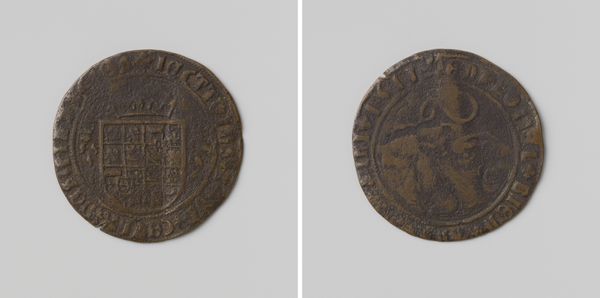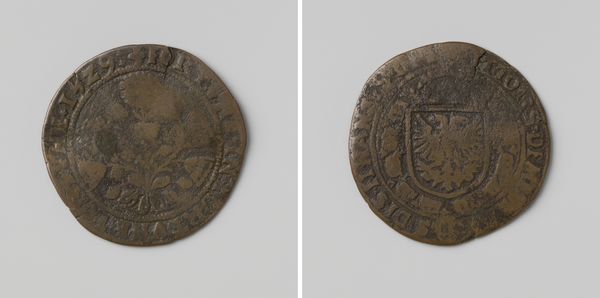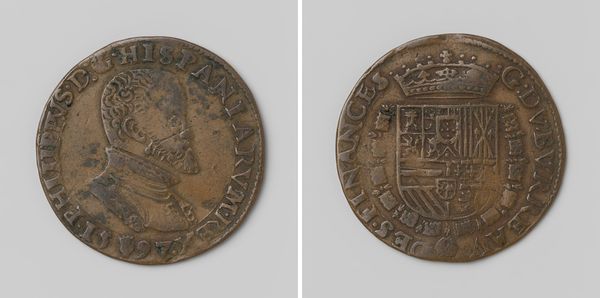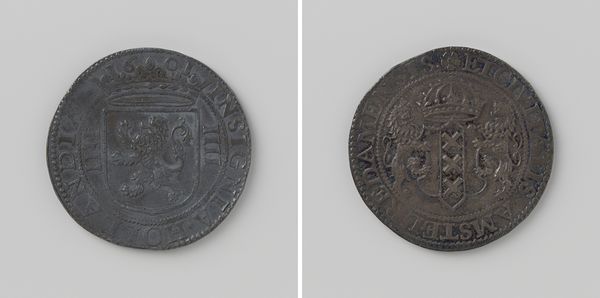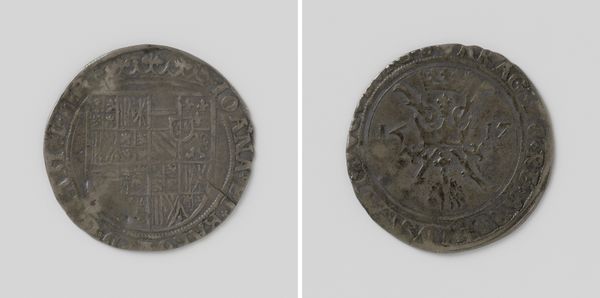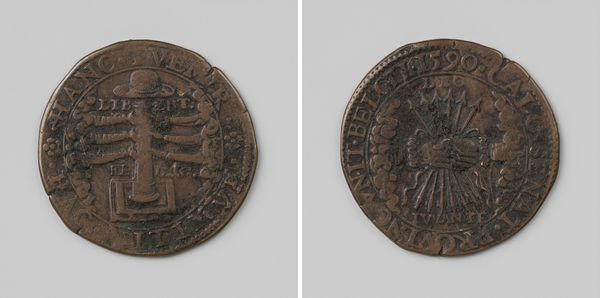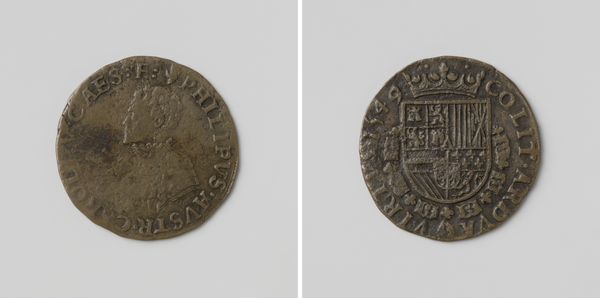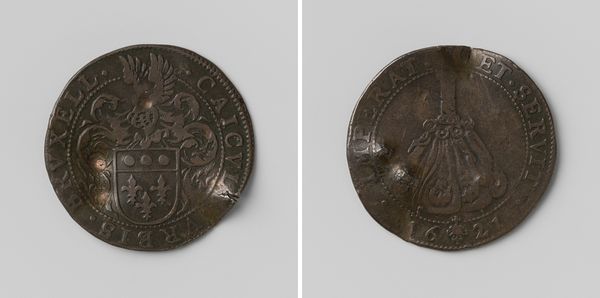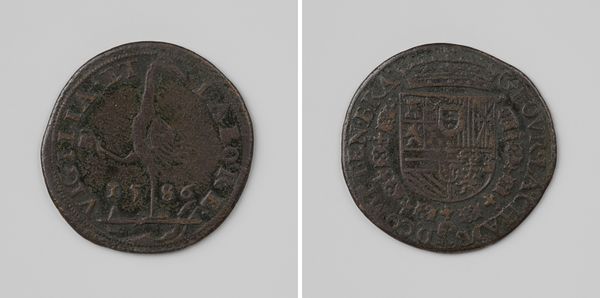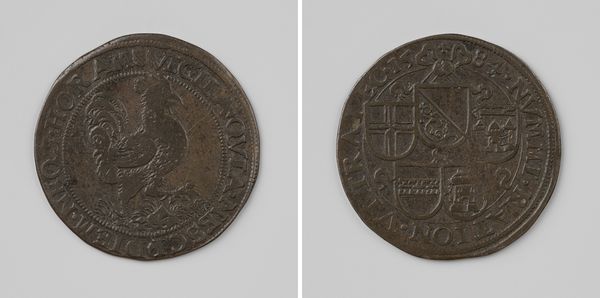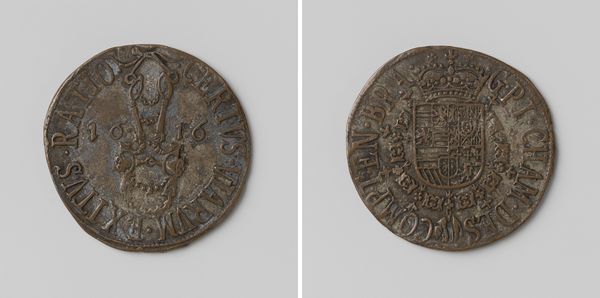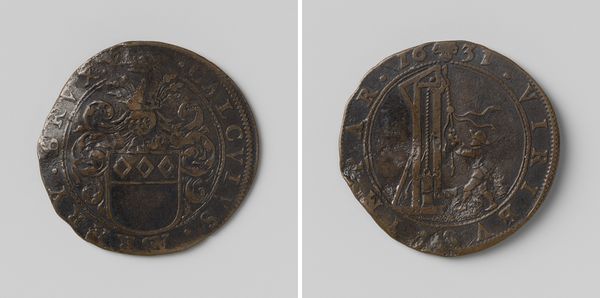
Filips IV, koning van Spanje, rekenpenning geslagen op last van de raad van Financiën 1637
0:00
0:00
carving, metal, relief, sculpture
#
portrait
#
carving
#
baroque
#
metal
#
sculpture
#
relief
#
sculpture
Dimensions: diameter 2.9 cm, weight 5.29 gr
Copyright: Rijks Museum: Open Domain
This is a bronze coin with a portrait of Filips IV, King of Spain, likely made sometime in the 17th century. Coins like this were made through a process called striking, where a design is engraved into a die, which is then hammered onto a blank metal disc. The material of bronze is important here. It was a relatively inexpensive metal, so these coins could be produced in large quantities. This speaks to the expanding economies of Europe at the time, and the need for standardized currency to facilitate trade and governance. But don't let the humble material fool you. The act of striking a coin was also symbolic. The King's image, carefully rendered, became a mark of authority stamped onto a medium designed for circulation. In a sense, each coin was a small piece of propaganda, reinforcing the King's power and reach. So, when you look at this coin, consider the many hands that touched it, the economies it fueled, and the power it represented. It’s a small object, but it tells a big story about society.
Comments
No comments
Be the first to comment and join the conversation on the ultimate creative platform.
